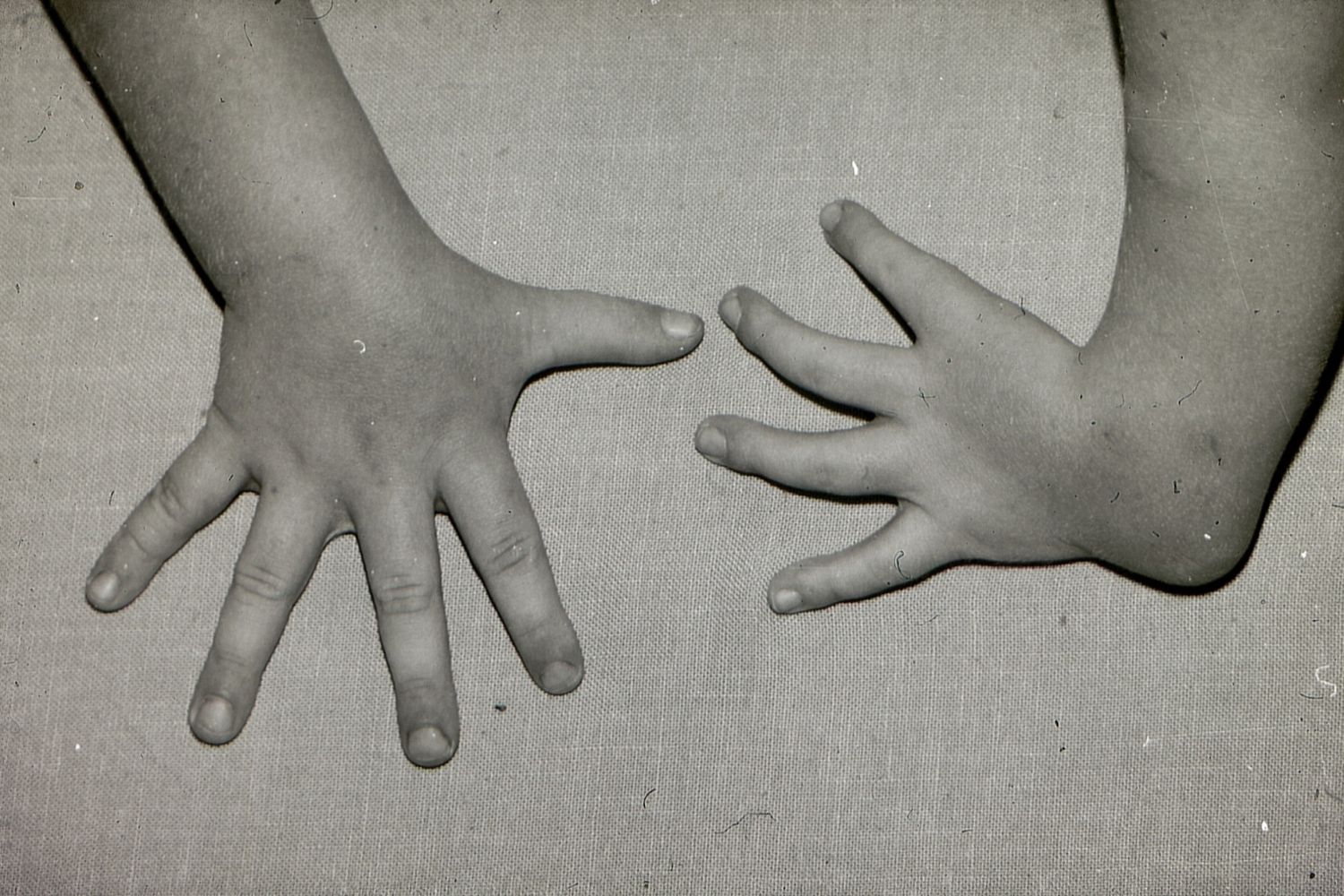
Phocomelia is a rare congenital disorder where limbs are underdeveloped or absent. Contractures refer to the permanent tightening of muscles, tendons, or skin that restricts movement. When combined with an absent thumb, these conditions present unique challenges. Imagine trying to perform daily tasks without a thumb or with limited limb movement. This can affect everything from writing to eating. Understanding these conditions helps in providing better support and care for those affected. In this post, we'll explore 25 facts about these conditions, shedding light on their causes, symptoms, and potential treatments. Let's dive into the world of phocomelia, contractures, and absent thumbs.
Key Takeaways:
- Phocomelia is a rare condition causing limb abnormalities, joint contractures, and absent thumbs. Early intervention, adaptive devices, and support can help individuals lead fulfilling lives despite the challenges.
- Research and advancements in genetic research, stem cell therapy, and 3D printing offer hope for improving treatment and quality of life for individuals with phocomelia. Collaboration and public awareness are key to progress.
Understanding Phocomelia
Phocomelia is a rare congenital disorder that affects limb development. It can result in shortened or absent limbs, often resembling flippers. This condition can be accompanied by other physical anomalies, including contractures and absent thumbs.
-
Phocomelia derives from the Greek words "phoke" (seal) and "melos" (limb), describing limbs that resemble seal flippers.
-
Thalidomide, a drug prescribed in the late 1950s and early 1960s for morning sickness, caused a significant number of phocomelia cases.
-
Genetic mutations can also lead to phocomelia, though these cases are less common than those caused by environmental factors.
-
Phocomelia can affect both the upper and lower limbs, though upper limb involvement is more frequent.
-
The severity of limb shortening or absence can vary widely among individuals with phocomelia.
Contractures in Phocomelia
Contractures are a common complication in individuals with phocomelia. These are permanent shortening of muscles or tendons around joints, leading to restricted movement.
-
Joint contractures can occur in the elbows, knees, hips, and other joints, severely limiting mobility.
-
Physical therapy is often required to manage contractures and improve joint function.
-
Surgical interventions may be necessary to release contractures and enhance limb function.
-
Early intervention is crucial for preventing severe contractures and maintaining as much mobility as possible.
-
Adaptive devices such as braces or orthotics can help manage contractures and improve daily functioning.
Absent Thumb in Phocomelia
The absence of thumbs is another characteristic feature of phocomelia. This can significantly impact hand function and dexterity.
-
Thumb absence can occur on one or both hands, affecting the ability to grasp and manipulate objects.
-
Pollicization surgery is a procedure where another finger, usually the index finger, is transformed into a thumb to improve hand function.
-
Occupational therapy can help individuals adapt to the absence of thumbs and develop alternative ways to perform tasks.
-
Prosthetic devices can be used to replace absent thumbs and enhance hand function.
-
Early assessment by a hand specialist is important for planning appropriate interventions.
Living with Phocomelia
Living with phocomelia presents unique challenges, but many individuals lead fulfilling lives with the right support and adaptations.
-
Assistive technology such as voice-activated devices and specialized computer interfaces can greatly enhance independence.
-
Educational support is essential to ensure children with phocomelia receive appropriate accommodations in school.
-
Social support from family, friends, and support groups can provide emotional and practical assistance.
-
Regular medical follow-ups are necessary to monitor and manage associated health issues.
-
Advocacy for disability rights and accessibility can help improve the quality of life for individuals with phocomelia.
Research and Advances
Ongoing research is crucial for understanding phocomelia and developing new treatments and interventions.
-
Genetic research is helping to identify the specific mutations that cause phocomelia.
-
Stem cell therapy holds potential for regenerating damaged tissues and improving limb function.
-
3D printing technology is being explored for creating custom prosthetics and orthotics.
-
Public awareness campaigns can help reduce stigma and promote inclusion for individuals with phocomelia.
-
Collaboration between researchers, healthcare providers, and patient advocacy groups is essential for advancing knowledge and improving care.
Final Thoughts on Phocomelia Contractures Absent Thumb
Phocomelia contractures absent thumb is a rare condition that affects limb development, often resulting in shortened or absent limbs. Understanding this condition helps in providing better support and care for those affected. Early diagnosis and intervention can significantly improve the quality of life for individuals with this condition. Medical advancements continue to offer new hope and treatment options. Awareness and education about phocomelia contractures absent thumb are crucial in fostering a more inclusive society. By learning more about this condition, we can contribute to a world where everyone, regardless of their physical differences, is valued and supported. Remember, knowledge is power, and sharing it can make a big difference in the lives of those affected by phocomelia contractures absent thumb.
Frequently Asked Questions
Was this page helpful?
Our commitment to delivering trustworthy and engaging content is at the heart of what we do. Each fact on our site is contributed by real users like you, bringing a wealth of diverse insights and information. To ensure the highest standards of accuracy and reliability, our dedicated editors meticulously review each submission. This process guarantees that the facts we share are not only fascinating but also credible. Trust in our commitment to quality and authenticity as you explore and learn with us.
